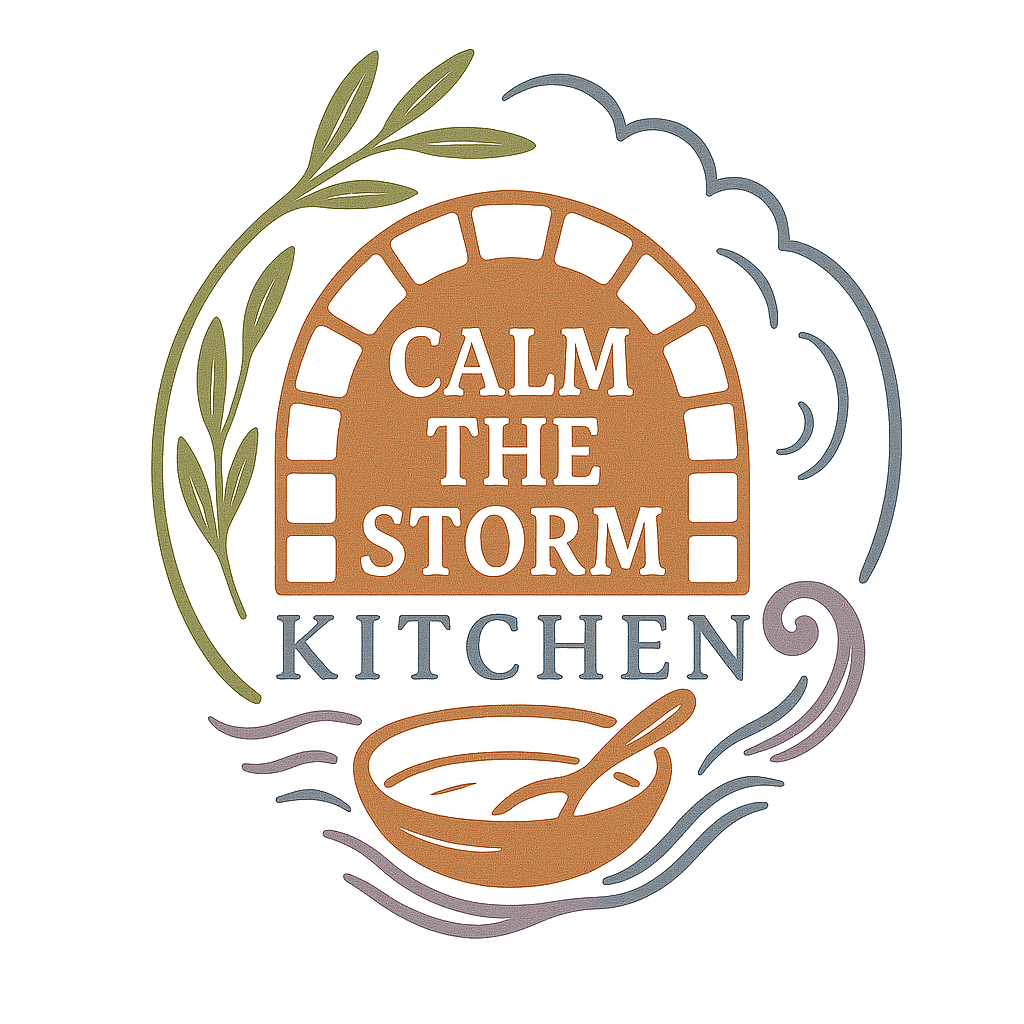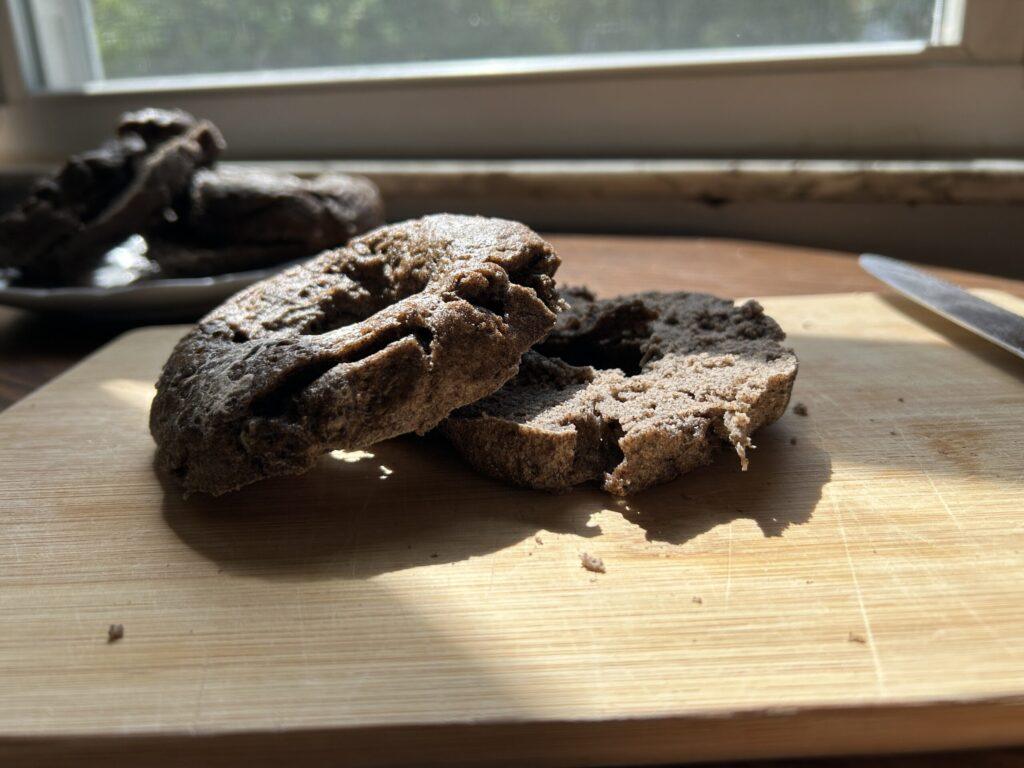This post contains affiliate links. This means I may earn a small commission—at no extra cost to you—if you choose to make a purchase through one of these links. I only recommend products I personally use, trust, or believe could be helpful for you. Thank you for supporting my work and helping keep this blog running!
Most advice you hear when it comes to diet and food sensitivities consists of “don’t eat this, or that, or that, or that…” and so on.
But today, I want to share five practical tips specifically for those with histamine intolerance—though they can benefit anyone on an anti-inflammatory journey.
These tips will help you feel better, and the best part? None of them are about avoiding specific foods! Instead, they focus on simple lifestyle changes. I hope you’ll be able to incorporate at least one of these into your routine if you aren’t already doing so.
#1 – Cooking at Home
For some, this may sound like a no-brainer—for others, it may feel overwhelming. But it needs to be said loud and clear: healing starts in your own kitchen. If you’re managing histamine intolerance or other food sensitivities, relying on takeout or drive-thru meals—even occasionally—can make it nearly impossible to improve. Convenience often comes at the cost of control, and when you don’t know exactly what’s in your food or how it was prepared, you’re more likely to encounter hidden triggers. The truth is, you won’t feel better without putting in some intentional effort at home.
Histamine levels rise as food ages, so the least inflammatory foods are going to be the freshest. Cooking at home gives you full control—you’re able to avoid the hidden ingredients and preservatives often lurking in packaged foods and restaurant meals. It also allows you to tweak recipes to your specific needs, experiment with safe ingredients, and get to know what your body can tolerate. Bonus: you’ll likely save money and feel better.
Cooking Tips to Keep Histamine Levels Low:
–Use quick, high-heat methods like grilling, sautéing, or baking when cooking meat. Avoid slow cooking, especially with older or pre-cooked meat, as it can increase histamine buildup.
–Steam or boil fresh vegetables to keep meals low histamine.
–Handle food quickly and efficiently. I use insulated grocery bags, always buy cold items last, and head straight home to refrigerate or freeze meat right away. I’ll share more about my systems for this, next month!
Making the time to cook can feel like a big shift, but it’s foundational. The more you do it, the easier it becomes—and the more you’ll be in tune with yourself. I hope that with my blog you even start to enjoy eating, again.
# 2 – Freeze, Freeze, Freeze!
Seriously—our freezer is packed to the brim with frozen meat, fruit, and meals to help keep histamine levels low. One thing I want to emphasize: freeze your leftovers after cooking. Histamine levels rise as food loses freshness, so once your meal has cooled slightly, store any leftovers in a freezer-safe container right away. This helps minimize histamine buildup and means you don’t have to cook everything fresh every single day.
Freezing allows you to build a stash of ready-to-go meals, offering variety without the daily effort. Most of my recipes are written to serve four adults, so if you’re cooking for one, you can eat one portion and freeze the other three. That way, you can alternate cooking days and still enjoy homemade, nourishing, low-histamine meals. We love to use these particular containers for dinners as they are a good capacity and stack well in the freezer.
#3 – Buy Local and Organic
This is a tip I constantly have to remind myself of. While we do buy some things locally—like honey—we’re not in a place to buy everything local all the time. And chances are, many of you are in the same boat. But if you can, buy local. Not only is it often lower in histamine, it’s also better for the environment.
If you’re able to build a relationship with a local butcher or farmer, you might even be able to get meat that’s freshly slaughtered and immediately frozen—truly the gold standard when it comes to keeping histamine levels low. I dream of the day we can have our own small farm, or even just a backyard garden, especially now that histamine intolerance is part of our daily life.
Buying organic is another beast. It can definitely raise your grocery bill, but for those dealing with severe histamine intolerance, it’s often worth the investment. Pesticides and chemical treatments can add to your “histamine bucket,” pushing you past your threshold even if you’re eating foods generally considered “safe.” Some conventional products contain additives that may trigger reactions. For example, conventional bananas are often sprayed with chemicals to speed up ripening—exactly what we’re trying to avoid when managing histamine levels. Opting for green, organic bananas might make the difference of being able to eat a banana vs a flare-up.
So again, do what you can to choose fresher. It makes a difference.
#4 Keep Track of Trigger Foods
This habit is actually how we discovered histamine intolerance in the first place.
After keeping notes about what didn’t sit well with my husband, I found myself asking: What do tomatoes, spinach, eggplant, and wine have in common? At first, it baffled me—especially the eggplant. These foods seemed so unrelated. But the common thread? Histamines. That realization changed everything.
Tracking also helped us recognize that even “safe” foods became problematic when eaten as leftovers. That’s when we began freezing meals immediately after cooking—something I recommend to anyone dealing with histamine intolerance.
So, here’s your encouragement: pull out a notebook or start a digital food journal and begin tracking what you eat and how you feel. Not only can this help you balance your macro nutrients—making sure you’re getting enough protein, fat, and calories—but it will also help identify your specific triggers.
If you would like, you can download the daily food and symptom log that I made from my ko-fi shop.
By downloading, you will be added to our weekly email list if you aren’t already!
I know, I know. During a flare-up, everything can feel like the problem. But especially during an elimination phase, it’s important to note what you’re eating and how you feel:
- Immediately after eating
- Between meals
- Just before your next meal
It may help to try spacing your meals out evenly and limiting snacking, so it’s easier to say, “Wow, breakfast really didn’t work for me today.” From there, you can ask:
- Did I include pork, a histamine liberator?
- Was there something like leftover, rice or meat?
- Did I sneak in a slice of pizza last night with tomato sauce?
Or maybe the histamine “triggers” don’t bother you, but sweet potatoes (High in Oxalates) or herbs (High in Salicylates) do.
It starts to clear the water, and helps you to know what you need to feel better, when you start understanding what’s actually causing the issue.
#5 Ask Questions
I hate feeling like I’m an inconvenience. Once, I was served blatantly raw chicken at a restaurant — did I complain, ask for a new plate, or even speak up? No. I didn’t eat it, but I still paid for it like everything was fine. It would have been entirely reasonable to ask for a replacement, but I dread speaking up.
If you’re anything like me, I have some tough news: that stops now. Histamine intolerance — and any other food intolerance — is real. You’re not being dramatic. You have to stop gaslighting yourself and start advocating for your health. It’s not rude to ask questions — it’s responsible.
When you’re about to eat something you didn’t prepare, don’t hesitate to ask whoever is serving it:
- What ingredients were used in this?
- Where were do you buy that?
- Are these fresh?
- What time did you put this out?
- What oils or seasonings were used?
- Is there any vinegar, soy, or citrus in this?
You don’t need to interrogate — just calmly and kindly ask.
*Bonus * #6 Saying “No, Thank you.”
I know I said five, but here’s a bonus tip just for you: You have full permission not to eat something just because it was offered to you. It doesn’t matter if it was a gift, if it’s free, or if it just looks really good—you are not obligated to eat it.
Histamine intolerance isn’t widely understood, and it’s nearly impossible to explain all the nuances of what you can and can’t eat in a quick conversation. I know how hard it is to say no, especially when you feel the pressure to be polite.
But the truth is: your health matters more than someone else’s momentary discomfort.
Thank you all for taking the time to read this blog post. I truly hope you can glean something from these tips that will support you on your journey toward healing and wellness.
"Let perseverance be perfect, so that you may be perfect and complete, lacking in nothing."
—James 1:4 (NABRE)
Hungry? Check out my latest recipe!
Looking to feed your soul? Check out my latest Recipe for the Heart!


Leave a Reply